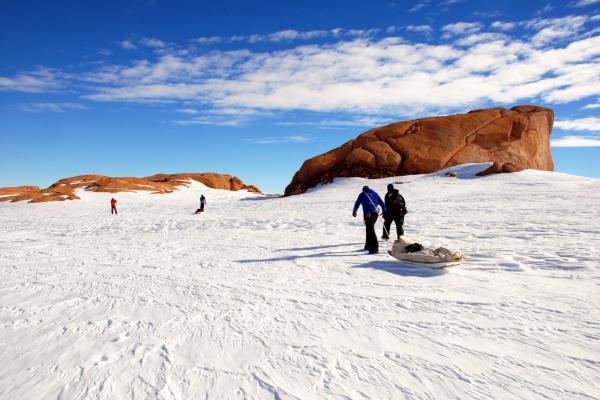Empowering Early Career Researchers in Advanced Earth System Modeling

A novel initiative has been launched in a pioneering effort led by Senior Research Associate Stephanie (Konfal) Sherman, a group member with Byrd Center's POLENET: The Polar Earth Observing Network. With contributions from a distinguished group of scientists, including POLENET lead Principal Investigator and Earth Sciences Professor Emeritus Terry Wilson from The Ohio State University, Rebekka Steffen and Holger Steffen from Lantmäteriet, Andrew Lloyd from Columbia University, Volker Klemann from GFZ German Research Centre, and Pippa Whitehouse from Durham University, this initiative aims to address significant barriers that early career researchers face in the field of glacial isostatic adjustment (GIA)—a crucial aspect of cryospheric science that studies the Earth's response to changes in ice mass.
Sherman presented the initiative last month at the American Geophysical Union Annual Meeting in Washington, D.C., where over twenty five thousand attendees from more than one hundred countries in diverse Earth and space science fields gathered to share their research and ideas.
Despite GIA's pivotal role in understanding global sea-level rise and its broad implications for society, entering this field is fraught with challenges. These challenges are primarily due to the interdisciplinary and collaborative nature of the research, which requires a comprehensive set of advanced skills often not covered in conventional university curricula. Additionally, the global scope of this science necessitates international collaboration, which can be particularly daunting for researchers from underrepresented communities lacking robust communication channels and professional networks.
To overcome these obstacles, the research team has initiated a series of specialized training schools designed to empower emerging scientists in this field. Each five-day training session includes a variety of hands-on exercises, collaborative student-lecturer work sessions, field trips to observe real-world phenomena and structured opportunities for networking. These elements are crafted to enhance both the participants' scientific understanding and collaborative skills.
Generous support from numerous domestic and international organizations made it possible to engage students from developing countries and those belonging to communities at the initial stages of establishing national Antarctic research programs. The schools have attracted participants from dozens of countries across all six continents, creating a rich tapestry of backgrounds, cultures, and experiences.
The success metrics from these schools suggest that this educational model is highly effective and could be replicated in other complex research fields, such as coupled climate-ocean-ice sheet modeling. The initiative equips early career researchers with essential skills and networking opportunities to address complex, globally significant environmental issues.
This forward-thinking approach by Sherman and her colleagues sets a new standard in scientific education and research. It emphasizes the importance of an interdisciplinary and collaborative approach for tackling some of the most pressing challenges of our time.
Related Links:
- Event: 2025 Glacial Isostatic Adjustment Workshop, June 2-6, 2025, British Columbia, Canada & Virtual
